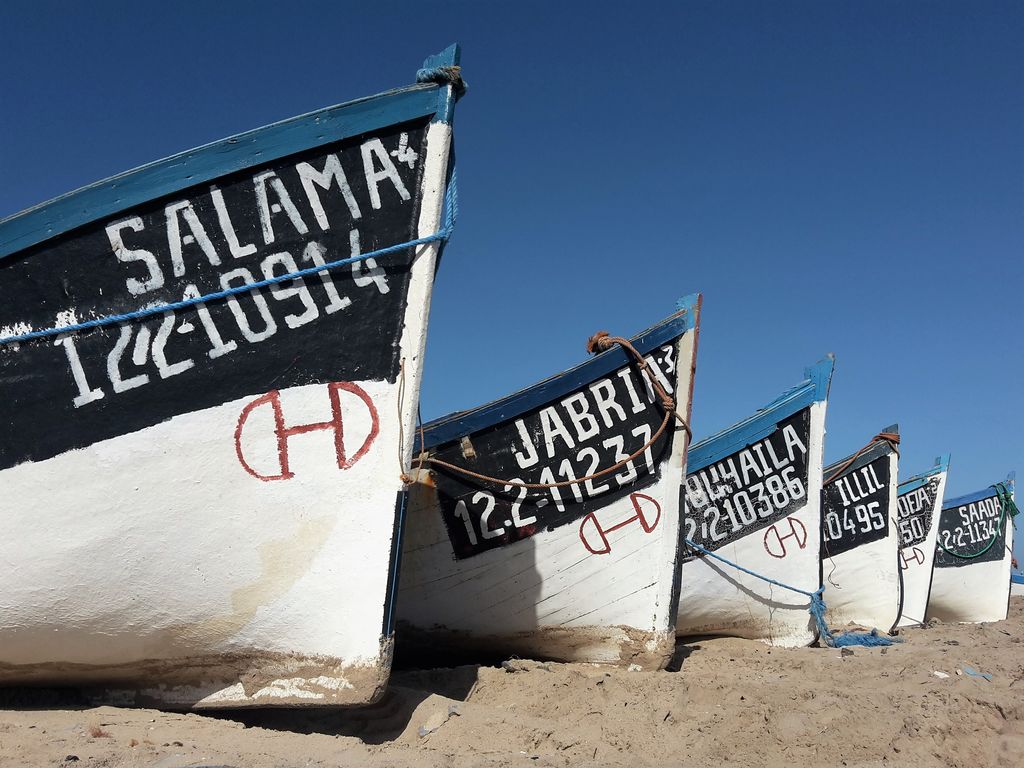Project
COFISHMAP - contaminated fish habitats in Morocco
![[Translate to English:] Fischerboote im Hafen von Safi (Marokko)](/media/_processed_/8/9/csm_COFISHMAP_M_Damerau_b0dd74e7fd.jpg)
Assessment of Moroccan coastal fish habitat and water quality
Together with Moroccan partners we investigate the pollution of fishes from Moroccan coastal waters.
Background and Objective
The Atlantic coast of Morocco is one of the richest fishing grounds in the world. Altogether, Morocco's coast line covers 2,141 miles along the Mediterranean Sea and Atlantic Ocean. Fishing is a major industry in Morocco since the 1930's and the industry experienced tremendous growth during the 1980's. However, together with waste management and desertification, water quality and coastal pollution are considered the two major environmental issues. Estuarine and nearshore living benthic and demersal fish species are among the most vulnerable members of the marine food chain in terms of chemical pollution. While pollution of surface water is mostly periodic and linked to specific emission events, contamination in or near sediments remains persistent. Benthic fish species like freshwater eels, congers and moray eels considered stationary during their growth phase, live close to the sediment and are known to accumulate chemical pollutants due to their high position in the food chain and their high lipid content.
By analyzing the contamination of European eel (Anguilla anguilla), European conger (Conger conger) as well as Mediterranean moray (Muraena helena) for heavy metals as well as PAH-metabolites (degradation products of fossil oil) at several estuarine sampling stations along the Moroccan Mediterranean and Atlantic coastline we want to determine and map hotspots of coastal pollution and provide a risk assessment of fish consumption in the area. A country-wide study showing different contamination levels in fish is lacking so far.
Approach
In total 12 sites along the mediterranean and atlanctic coastline of Morocco were visited and 182 samples were taken and analysed. Six diferent species were covered: Muraena helena, Conger conger, Halobartrachus didactylus, Anguilla anguilla, Ophidiinae barbatum and Gymnothorax unicolor. Samples were analysed for 1-hydroxy-pyrene in bile, mercury in muscle as well as cadmium an lead in liver tissue.
Researchers from Morocco came to Germany and established a scientific bi-national network supported by interdisciplinary aspects concerning biology and analytical chemistry.
Data and Methods
Information on the contamination of the above mentioned fish species are available concerning mercury, lead, cadmium an 1-hydroxyparene. For Conger conger the data give a spatial overview on contamination along the moroccan coastline.
Analytical methods used are Atomic Absorption Spectroscopy (AAS) as well as High Prssure Liquid Chromatography (HPLC) with fluorescence detection.
Our Research Questions
How is the contamination level of fish from Morocco?
Which fish species shows highest contamination?
Does the contamination have consequences for human consumption?
How is the spatial distribution of contamination?
Results
How is the contamination level of fish from Morocco?
Conger Conger from selected sites exhibit a mean contamination level of ...
- 9.4 ng 1-hydroxypyrene /ml bile
- 251 µg mercury /kg muscle
- 94 µg lead /kg liver
- 259 µg cadmium /kg liver
Which fish species shows highest contamination?
Regarding the contaminants Anguilla anguilla exhibits highest mean values for 1-hydroxy pyrene an lead. Murena helena has the highest mean values for mercury and cadmium. Highest individual contamination with mercury was observed in a Conger conger.
Does contamination have consequences for human consumption?
Around 50% of the EU food threshold were reached by Muraena helena and Conger conger longer than about 80-100 cm. Such fish should be consumed less often.
How is the spatial distribution of contamination?
The spatial distrubution was investigated exemplaric for Conger conger. Hot spots and regional distribution differed with the investigated substances. E.g. cadmium showed higher mean values along the Atlantic coast than along the Mediterranean coast. Highest cadmium concentrations were found in Conger conger from Casablanca.
Links and Downloads
Thünen-Contact

Involved Thünen-Partners
Involved external Thünen-Partners
- Université Mohammed V, Faculté de Sciences
(Rabat, Marokko)
Funding Body
-
Federal Ministry of Education and Research (BMBF)
(national, öffentlich)
Duration
5.2017 - 8.2022
More Information
Project funding number: 01DH17005
Project status:
finished
Publications
- 0
Kammann UKR, Pohlmann J-D, Wariaghli F, Bourassi H, Regelsberger K, Yahyaoui A, Hanel R (2023) COFISHMAP - Assessment of Moroccan coastal fish habitat and water quality. Bremerhaven: Thünen Institute of Fisheries Ecology, 2 p, Project Brief Thünen Inst 2023/08a, DOI:10.3220/PB1672824208000
- 1
Kammann UKR, Pohlmann J-D, Wariaghli F, Bourassi H, Regelsberger K, Yahyaoui A, Hanel R (2023) COFISHMAP - Bewertung der Qualität von küstennahen Fisch-Habitaten in Marokko. Bremerhaven: Thünen-Institut für Fischereiökologie, 2 p, Project Brief Thünen Inst 2023/08, DOI:10.3220/PB1672823831000
- 2
Kammann UKR, Pohlmann J-D, Wariaghli F, Bourassi H, Regelsberger K, Yahyaoui A, Hanel R (2022) Heavy metal contamination in European conger (Conger conger, Linnaeus 1758) along the coastline of Morocco. Environ Sci Europe 34:114, DOI:10.1186/s12302-022-00694-0
- 3
Baali A, Kammann UKR, Hanel R, El Qoraychy I, Yahyaoui A (2016) Bile metabolites of polycyclic aromatic hydrocarbons (PAHs) in three species of fish from Morocco. Environ Sci Europe 28(25), DOI:10.1186/s12302-016-0093-6

![[Translate to English:] [Translate to English:]](/media/_processed_/2/9/csm_Embryo-Exp_Gelege_9F_dpf5-200513111619_c8534a8199.jpg)
![[Translate to English:] [Translate to English:]](/media/_processed_/2/9/csm_Embryo-Exp_Gelege_9F_dpf5-200513111619_9027994d44.jpg)





